The Ultimate Guide to Customer Data Platforms (CDPs)
A robust customer data platform (CDP) is a game changer for businesses striving to enhance customer experience and boost profitability.For companies looking to stay competitive, leveraging a powerful data management platform to collect, integrate, and analyze customer data is essential. A well-implemented CDP unifies transactional, behavioral, and first-party customer data to create a unified customer profile that drives personalized marketing campaigns and improves customer relationship management.This blog explores how a customer data platform transforms marketing efforts, enhances customer interactions, and maximizes customer lifetime value through actionable insights and effective strategies.



What is a Customer Data Platform (CDP)?
A customer data platform (CDP) is a centralized data management solution that collects customer data from various sources, integrates it, and creates a unified view of each customer.
Defining a CDP
Customer Data Platform CDP: A system that ingests data from multiple channels, such as website visits, transactional data, and social media interactions.
Data Management Solutions: The CDP provides comprehensive data integration, enabling businesses to manage customer data efficiently.
Importance for Businesses
Unified Customer Profile: It builds a single unified customer profile that consolidates data points from diverse sources.
Actionable Insights: These insights help tailor marketing campaigns and improve customer experience.
The Importance of Customer Data
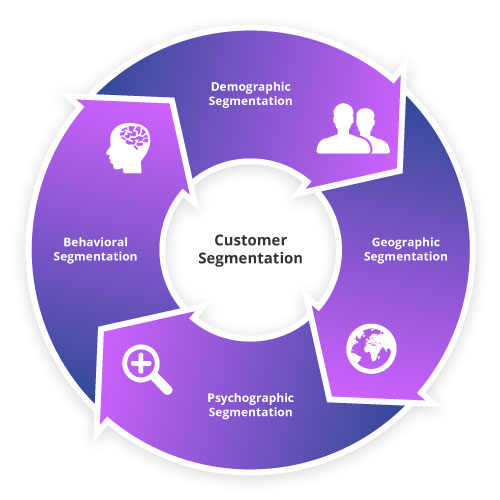
Customer data is at the core of informed marketing and business strategy decision-making.
Collecting and Analyzing Data
Data Collection: It involves gathering transactional and behavioral data from multiple sources.
Business Intelligence: Analyzing this data provides valuable customer insights, helping to identify patterns and improve customer satisfaction.
Enhancing Customer Experience
Personalized Marketing Campaigns: Leverage data to create personalized experiences that drive customer loyalty.
Customer Journey Mapping: Understanding how customers interact with your brand across the entire customer journey is key to effective customer relationship management.
CDP vs DMP vs CRM: What's the Difference & Which Do You Need?
The digital marketing landscape is full of acronyms, and understanding the distinctions between a Customer Data Platform (CDP), a Data Management Platform (DMP), and a Customer Relationship Management (CRM) system is crucial for building a strong brand presence.Each system serves a unique purpose in managing and analyzing customer data, ultimately impacting your marketing efforts and customer experience.
Customer Data Platform (CDP)
A customer data platform (CDP) is a robust data management solution designed to collect data from multiple sources and unify customer data into a single unified customer profile. A CDP creates actionable insights that drive personalized marketing campaigns by aggregating transactional, behavioral, and first-party data.Marketing teams can leverage these insights to analyze data across the entire customer journey, optimize SEO efforts, and tailor messaging for potential customers. With features like identity resolution and machine learning, a CDP is a powerful tool for enhancing customer satisfaction, boosting customer retention, and increasing customer lifetime value.
Customer Relationship Management (CRM)
A customer relationship management (CRM) system focuses on managing customer interactions and maintaining detailed records of customer relationships.CRMs are essential for tracking customer purchases, managing direct customer interactions, and supporting sales and customer service functions. While a CRM is excellent for building customer loyalty and ensuring exceptional customer service, it often lacks a CDP’s advanced data integration and analytical capabilities.
Data Management Platform (DMP)
On the other hand, a data management platform (DMP) is geared towards aggregating and organizing anonymous third-party data to create broad audience segments for targeted advertising. While a DMP collects a wide range of data points and is effective for developing advertising strategies across multiple channels, it typically does not store personally identifiable information.Instead, it’s ideal for understanding general customer behavior and market trends. Although a DMP is valuable for certain digital marketing tactics, it does not offer the comprehensive, unified customer insights provided by a CDP.
Which Do You Need?
Deciding between a CDP, DMP, or CRM depends on your business needs and marketing goals.
CDP: A CDP is an ideal choice if you need a solution that unifies customer data from various channels to provide a comprehensive view of your customers and drive personalized marketing campaigns.
DMP: If your primary focus is on gathering broad, anonymous audience data for targeted advertising and refining your digital marketing strategies, a DMP might be sufficient.
CRM: If managing direct customer interactions, tracking customer history, and building long-term relationships are your main priorities, then a CRM is indispensable.
Integrating Systems for Maximum Impact
For many businesses, the best approach is to integrate all three systems. A CDP can provide a unified view of your customer data, informing your DMP strategies and CRM operations.
This integration ensures you comprehensively understand your customer journey, enabling effective marketing strategies that drive conversion and customer loyalty.
Benefits of a Unified Approach
Actionable Insights: Combining data from a CDP with the segmentation power of a DMP and the relational focus of a CRM provides invaluable insights into customer behavior.
Enhanced Marketing Campaigns: A unified customer profile allows highly personalized marketing campaigns that improve conversion rates and boost customer satisfaction.
Efficient Data Management: Streamlining data collection and integration reduces operational costs and supports a more efficient marketing strategy.
Improved Customer Experience: When all customer data is analyzed cohesively, you can better predict customer needs, tailor your communication, and ensure that every interaction is seamless and impactful.
Leveraging Technology for Superior Customer Service
Integrating advanced technologies such as artificial intelligence and machine learning with your CDP can further enhance its capabilities.
These technologies enable real-time customer data analysis, allowing you to respond swiftly to changes in customer behavior and market trends. By investing in robust data management solutions and advanced marketing technologies, your business can maintain a competitive edge in the ever-evolving digital landscape.
Enhancing Customer Relationship Management with a CDP
A CDP is crucial in elevating customer relationship management (CRM) by providing a comprehensive view of customer interactions.
Key Features
Customer Interaction Tracking: Monitor every customer interaction, from website visits to post-purchase follow-ups.
CRM Integration: Seamlessly integrate with existing CRM systems to enhance customer relationship management.
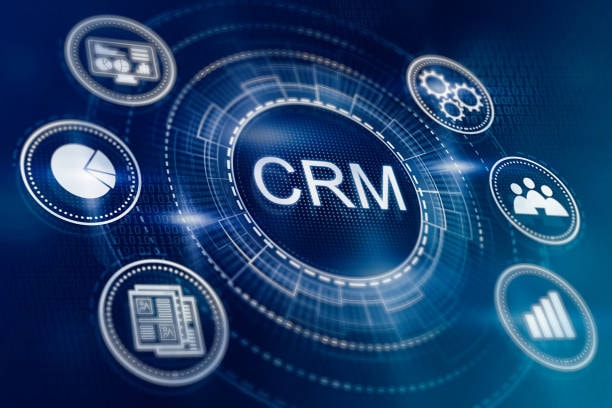
Benefits for Businesses
Customer Loyalty: Improved insights lead to higher customer satisfaction and retention.
Actionable Data: Use data-driven decisions to tailor marketing efforts, resulting in a more personalized customer experience.
Collecting Customer Data: The Foundation of a Unified Profile
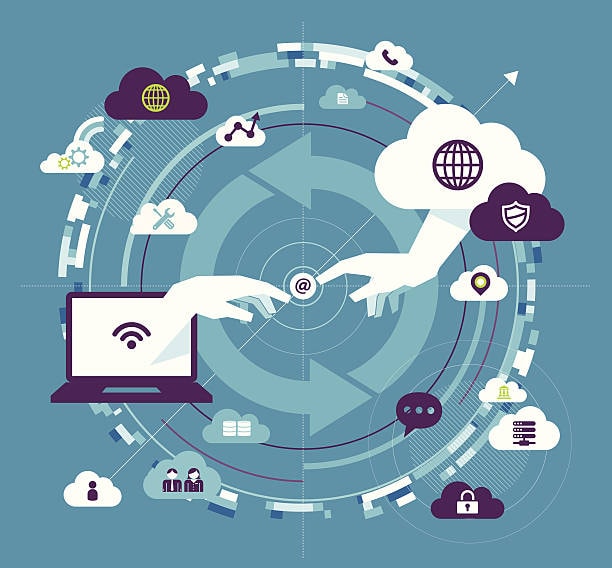
A successful CDP begins with effective data collection.
Methods of Data Collection
First-Party Data: Gather customer data directly via website forms, surveys, and mobile apps.
Transactional Data: Capture purchase and other transactional data that inform customer behavior.
Behavioral Data: Monitor customer behavior through website visits, social media interactions, and email marketing.
Integrating Data Sources
Data Integration: Unify customer data from various systems to create a comprehensive customer profile.
Data Warehouse vs. Data Lake: Utilize a data warehouse or data lake to securely store and manage all this data.
Creating a Unified Customer Profile
A unified customer profile is essential for personalized marketing and customer service excellence.
Benefits of a Unified View
Holistic Customer Insights: Provides a complete picture of the customer, enabling more targeted marketing efforts.
Improved Customer Journey: Helps map the entire customer journey, from initial engagement to final purchase.
Using Identity Resolution
Identity Resolution: Employ techniques to identify customers across multiple data points, ensuring accuracy in your unified customer profile.
Leveraging Machine Learning: Machine learning and artificial intelligence refine and update customer profiles continuously.
Leveraging Data Analytics for Customer Insights
Data analytics transforms raw customer data into actionable insights.
Advanced Analytical Techniques
Analyzing Data: Utilize statistical methods to analyze data points from various customer interactions.
Real-Time Analytics: Monitor key performance indicators (KPIs) such as conversion rate, customer lifetime value, and customer satisfaction.
Business Intelligence
Actionable Insights: Data analytics drives business intelligence, enabling effective marketing campaigns and operational improvements.
Optimization: Use insights to optimize marketing strategies and improve customer experience.
The Role of Artificial Intelligence and Machine Learning

Artificial intelligence (AI) and machine learning (ML) are integral to modern CDP solutions.
Enhancing Data Analysis
AI-Powered Insights: Leverage AI to analyze customer behavior and predict future trends.
Automation: Automate routine data collection and analysis processes, reducing manual effort and increasing accuracy.
Improving Customer Interaction
Personalization: Use machine learning to deliver personalized marketing campaigns that resonate with target audiences.
Identity Resolution: Enhance the accuracy of unified customer profiles through advanced AI techniques.
Enhancing Customer Experience with a CDP
A superior customer experience is achieved when comprehensive customer data informs every interaction.
Personalized Marketing Campaigns
Tailored Messaging: Use customer insights to craft personalized marketing campaigns that engage potential clients.
Improved User Experience: Enhance the customer journey by delivering relevant content and offers based on their past interactions.
Impact on Customer Satisfaction
Satisfied Customers: A well-implemented CDP leads to higher customer satisfaction by anticipating and meeting customer needs.
Customer Retention: By delivering exceptional, personalized experiences, businesses can retain loyal customers and increase customer lifetime value.
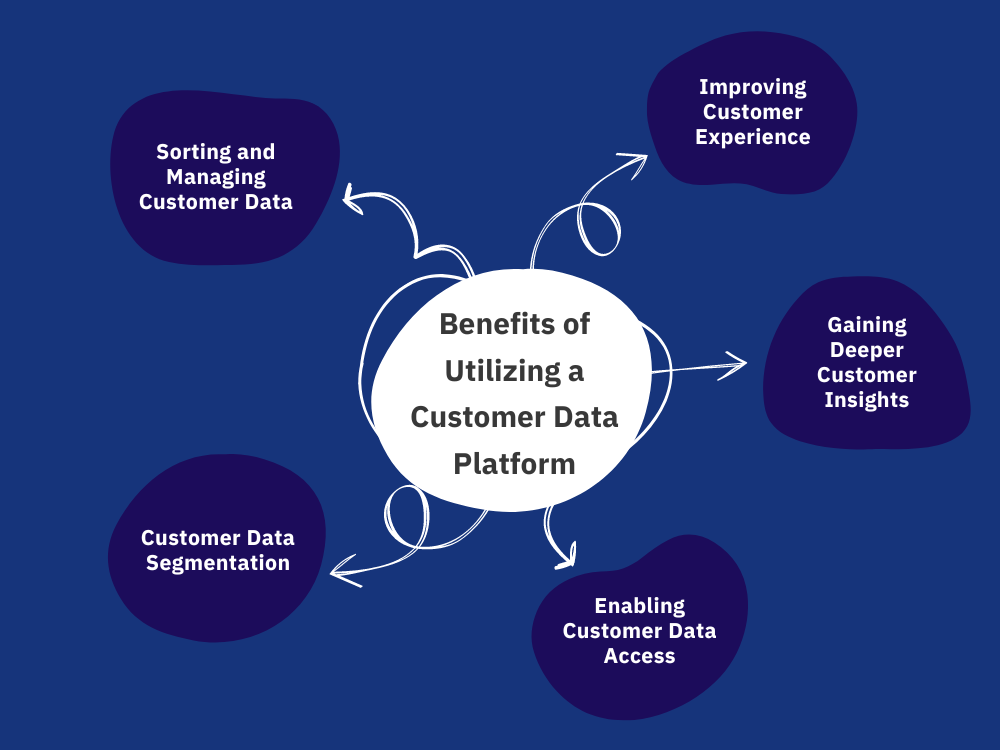
Integrating Data Across Multiple Channels
Successful CDP implementation involves integrating data from various channels.
Seamless Data Integration
Collecting Data: Ingest customer data from online, mobile, and offline channels to build a comprehensive view.
- Unified View: Ensure that all transactional, behavioral, and third-party data contributes to a single unified customer profile.
Benefits for Marketing Teams
Multichannel Marketing: Provides a unified data platform to support digital marketing strategies across multiple channels.
Enhanced Customer Experience: Enables personalized customer interactions, improving satisfaction and retention.
Enhancing Customer Retention Through Personalized Marketing
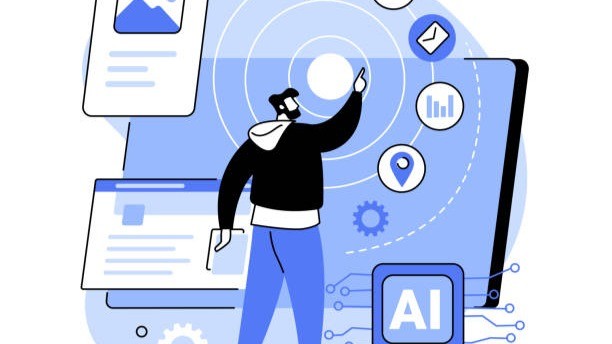
Personalized marketing is key to retaining customers and fostering loyalty.
Crafting Targeted Campaigns
Segmentation: Utilize first-party customer data to segment your audience and tailor your marketing messages.
Personalized Offers: Create special offers and promotions based on customer purchase data and behavioral insights.
Driving Customer Loyalty
Satisfied Clients: Personalization increases customer satisfaction, converting one-time buyers into loyal, repeat customers.
Long-Term Value: Enhance customer lifetime value through targeted, effective marketing campaigns.
Optimizing Marketing Campaigns with Advanced SEO Strategies
SEO is essential for increasing visibility and driving organic traffic.
SEO Efforts and Keyword Integration
Relevant Keywords: Incorporate targeted keywords into your website content and blog posts to improve search engine rankings.
High-Quality Content: Publish engaging, valuable content that resonates with your target audience and supports your digital marketing strategy.
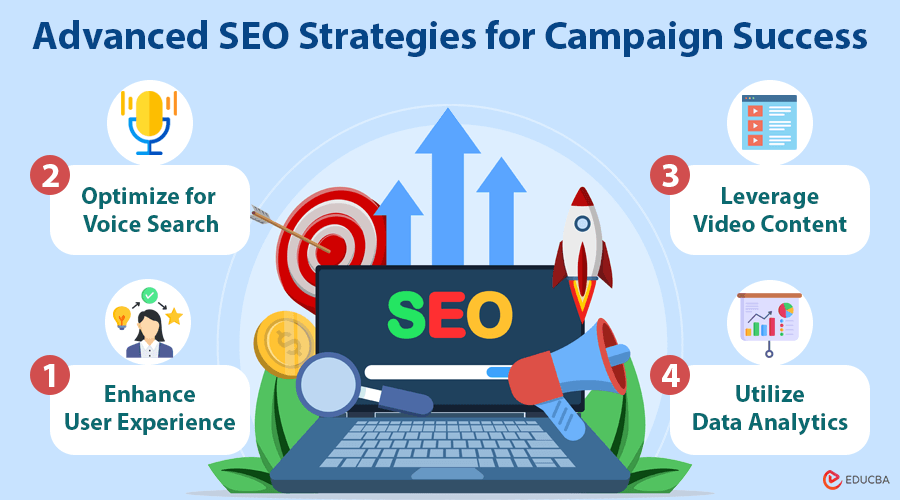
Measuring Success
Conversion Rate: Monitor conversion rates and other KPIs to assess the effectiveness of your SEO strategies.
Analytics Tools: Use Google Analytics and other reporting tools to refine your approach and drive continuous improvement.
Leveraging Digital Marketing Channels
A comprehensive digital marketing strategy integrates multiple channels to reach potential clients.
Social Media Marketing
Social Media Engagement: Build a strong presence on social media platforms to engage with customers and promote personalized marketing campaigns.
User-Generated Content: Encourage customers to share their experiences, enhancing brand reputation and trust.
Email Marketing
Building an Email List: Use email marketing strategies to nurture leads and keep customers informed about new offers and updates.
Effective Campaigns: Develop targeted email campaigns that drive customer retention and generate repeat business.
Effective Marketing Strategies for CDP Implementation

Integrating a customer data platform into your marketing efforts requires a well-thought-out strategy.
Comprehensive Marketing Plans
Marketing Mix Elements: Combine content marketing, SEO, email marketing, and social media strategies to create a unified marketing plan.
Campaign Management: Utilize campaign management tools to execute and monitor your marketing strategies effectively.
Cost-Effective Solutions
Return on Investment: Measure the success of your marketing efforts with KPIs such as conversion rate and customer retention.
Investment in Technology: Invest in advanced digital marketing services and tools to streamline operations and reduce costs.
Building a Unified Customer Profile: The Backbone of Effective Marketing
A unified customer profile consolidates all customer data into a single view, driving personalized marketing efforts.
Integrating Data Points
Collecting Data: Ingest data from multiple channels—transactional, behavioral, and third-party data—to create a comprehensive customer profile.
Unify Customer Data: Use identity resolution and machine learning to integrate data from various sources, building a unified customer profile.
Actionable Insights
Customer Insights: Leverage these insights to tailor marketing campaigns and improve customer relationship management.
Enhanced Customer Experience: A unified view helps deliver personalized experiences that increase customer loyalty and retention.

Integrating Customer Data with Marketing Efforts

Seamless integration of customer data enhances the effectiveness of your marketing strategy.
Data-Driven Decision Making
Analyze Data: Leverage business intelligence tools to analyze customer behavior and refine your marketing strategies.
Real-Time Results: Use real-time data to make informed decisions that optimize your digital marketing efforts and drive customer satisfaction.
Enhancing the Customer Journey
Comprehensive Insights: A unified customer profile provides insights into every stage of the customer journey, allowing you to tailor marketing activities effectively.
Improved User Experience: By aligning marketing campaigns with customer data, you create a seamless, personalized experience that drives customer retention.
The Role of Marketing Technologies in CDP Success
Marketing technologies play a vital role in executing effective strategies.
Utilizing Advanced Tools
Digital Platforms: Leverage platforms like Google Ads, Google Analytics, and social media management tools to drive traffic and conversions.
Integrated Systems: Ensure your customer data platform works seamlessly with other marketing systems for a unified view of your customer journey.
Enhancing Customer Interactions
Personalized Engagement: Use data from your CDP to craft personalized messages that resonate with potential customers and encourage positive interactions.
Improved Conversion Rates: A strong digital marketing strategy integrating CDP data can increase conversion rates and revenue.
How LinkLumin Can Help with CDP
LinkLumin is a powerful tool for limo business owners seeking to attract potential clients while reducing costs and boosting conversion rates.
This solution enables you to manage customer data for your luxury limousine service through advanced SEO efforts, effective marketing strategies, and comprehensive digital marketing solutions. By unifying first-party data and leveraging a wide range of marketing tactics—from Email marketing using a well-maintained email list to Social Media Management across various digital platforms—LinkLumin delivers real-time results and improved user experience.
This invaluable investment drives positive online reviews, transparent pricing, and competitive rates, ensuring satisfied customers and a strong brand presence in the luxury transportation industry.
Testimonials
Johny
"Before LinkLumin’s CDP, our customer data was scattered across multiple platforms. Now, we have a 360-degree view of every customer, helping us personalize marketing and increase engagement!"
Emily Davis
With LinkLumin’s CDP, we can track customer behavior across all touchpoints. This has helped us refine our strategy and boost our campaign ROI by 40%!"
Michael Johnson
"We struggled with disconnected data sources until LinkLumin’s CDP brought everything together. Now, our sales and marketing teams work from a single source of truth!"
Michael Smith
"Thanks to LinkLumin’s CDP, we can create hyper-personalized customer experiences. Our retention rates have improved by 30% since we started using it!"
Lisa Taylor
"Managing customer data privacy was a nightmare. LinkLumin’s CDP not only streamlined our data collection but also ensured compliance with GDPR and CCPA regulations."
Step into the Future with LinkLumin’s Customer Data Platform
Unify Your Customer Data & Unlock Powerful Insights with LinkLumin’s CDP!
Don’t let fragmented data hold you back. Our Customer Data Platform centralizes your customer information, providing real-time insights that drive smarter marketing, higher engagement, and increased revenue.
Ready to harness the power of unified data?
Book a free demo today!
Get Started Now
FAQs
What is a Customer Data Platform (CDP)?
A CDP is a centralized system that collects, organizes, and unifies customer data from multiple sources, giving businesses a complete and real-time view of their customers.
How is a CDP different from a CRM or DMP?
A CRM focuses on customer interactions, while a DMP handles anonymous data for advertising. A CDP unifies all customer data—structured and unstructured—across multiple platforms for deeper insights and personalized marketing.
What types of businesses can benefit from LinkLumin’s CDP?
Any business that collects customer data will benefit from our CDP, which is perfect for e-commerce, B2B services, financial institutions, healthcare, SaaS companies, and more.
How does LinkLumin’s CDP improve marketing campaigns?
By consolidating data from different sources, our CDP enables precise audience segmentation, personalized messaging, and real-time analytics, leading to higher engagement and conversions.
Is LinkLumin’s CDP secure and compliant with data regulations?
Yes! We ensure GDPR, CCPA, and other data protection compliance, giving you full control over customer data privacy and security.